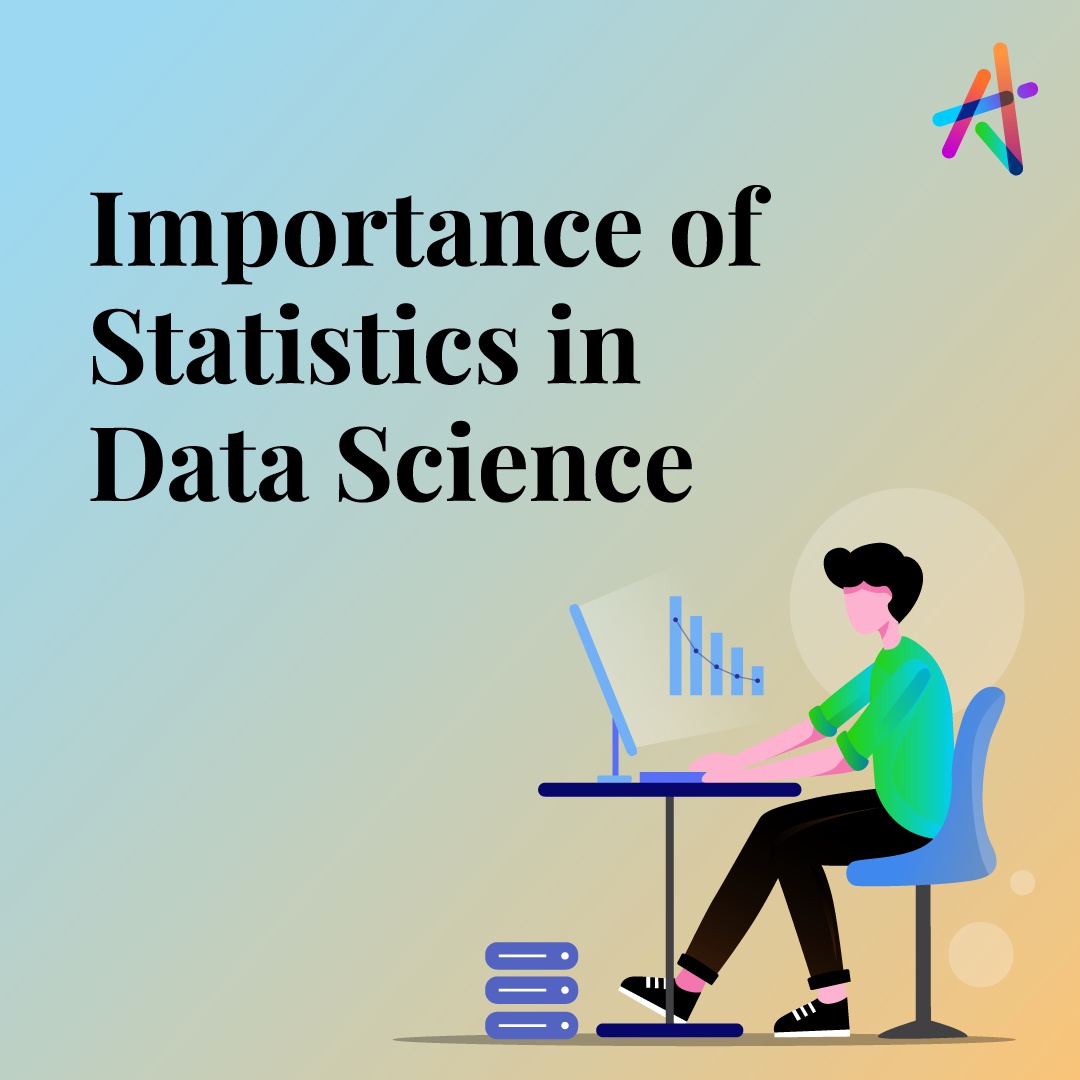Data Scientists are required to have a good knowledge on the essential concepts related to Statistics. It is one of the main concepts that are required to generate high-quality models. Statistics is the process of analyzing the dataset to identify the unique mathematical characteristics. Machine Learning starts as statistics and then advances further. Mean, median, mode, variance, average, and standard deviation are used to describe the dataset. There are two major statistical methods: descriptive statistics and inferential statistics.
After that come the different probability distributions, population, CLT, sample, kurtosis, and skewness. With advanced probability and statistics capabilities of data scientist, one can easily integrate practices like Bayesian statistics to direct
Importance of statistics for data scientist
A data scientist usually invests more time in pre-processing of data. This needs a thorough understanding of statistics. There are few general steps that always need to be performed to process any data.
- Identify the essentiality of features by using several statistical tests.
- Finding the relationship between features to eliminate the possibility of duplicate features.
- Converting the features into the needed format.
- Normalizing and scaling the data. This step also includes the identification of the distribution of data and the nature of data.
- Taking the data for further processing by using needed adjustments in the data.
- After processing the data identify the useful mathematical approach/model.
- Once the results are obtained the results are verified on the different accuracy measurement scales.
The data processing from the beginning to the end of the complete cycle there is a requirement of statistics at every single step. That’s why a good statistician can be a good data scientist as well.
Statistics is a form of mathematical analysis that uses quantified models and representations for a given set of experimental data or real-life studies. The main advantage of statistics is that information is presented in an easy way.
Here I have explained the basic statistics concepts that are also essential data scientist skills.
Understand the Type of Analytics
Descriptive Analytics tells us what happened in the past and helps a business understand how it is performing by providing context to help stakeholders interpret information.
Diagnostic Analytics takes descriptive data a step further and helps the capabilities of data scientist to understand why something happened in the past.
Predictive Analytics predicts what is most likely to happen in the future and provides companies with actionable insights based on the information.
Prescriptive Analytics provides recommendations regarding actions that will take advantage of the predictions and guide the possible actions toward a solution.
Probability
Probability is the basic need for understanding the possibilities. To start with let us take a very basic example – What are the chances that Team A is going to win the football match against Team B. To derive this answer we might require 100 people to give their respective votes – Number of Samples. Based on those votes we can have a chance of which team can win the game.
But, in this example, we come across another very important concept which is known as sampling – identifying the right set of people to vote for the results. So, the probability is the chance of whether the event will occur or not. Depending upon the scenario we can build different solutions around this.
Probability is the measure of the likelihood that an event will occur in a Random Experiment.
Variations
When one talks about various variations in data. They also talk about the distortion, error, shift in data. Along, with the variations in data the range of the data, relationship within the data. All these accounts for the variability of data. Some of the key terms to understand here are – Variance, Range, Standard Deviation, Error Deviation, Covariance, Correlation, Causality, etc.
Variance: The average squared difference of the values from the mean to measure how spread out a set of data is relative to mean.
Standard Deviation: The standard difference between each data point and the mean and the square root of variance.
Percentiles: A measure that indicates the value below which a given percentage of observations in a group of observations falls.
Quantiles: Values that divide the number of data points into four more or less equal parts, or quarters.
Range: The difference between the highest and lowest value in the dataset.


No comments yet